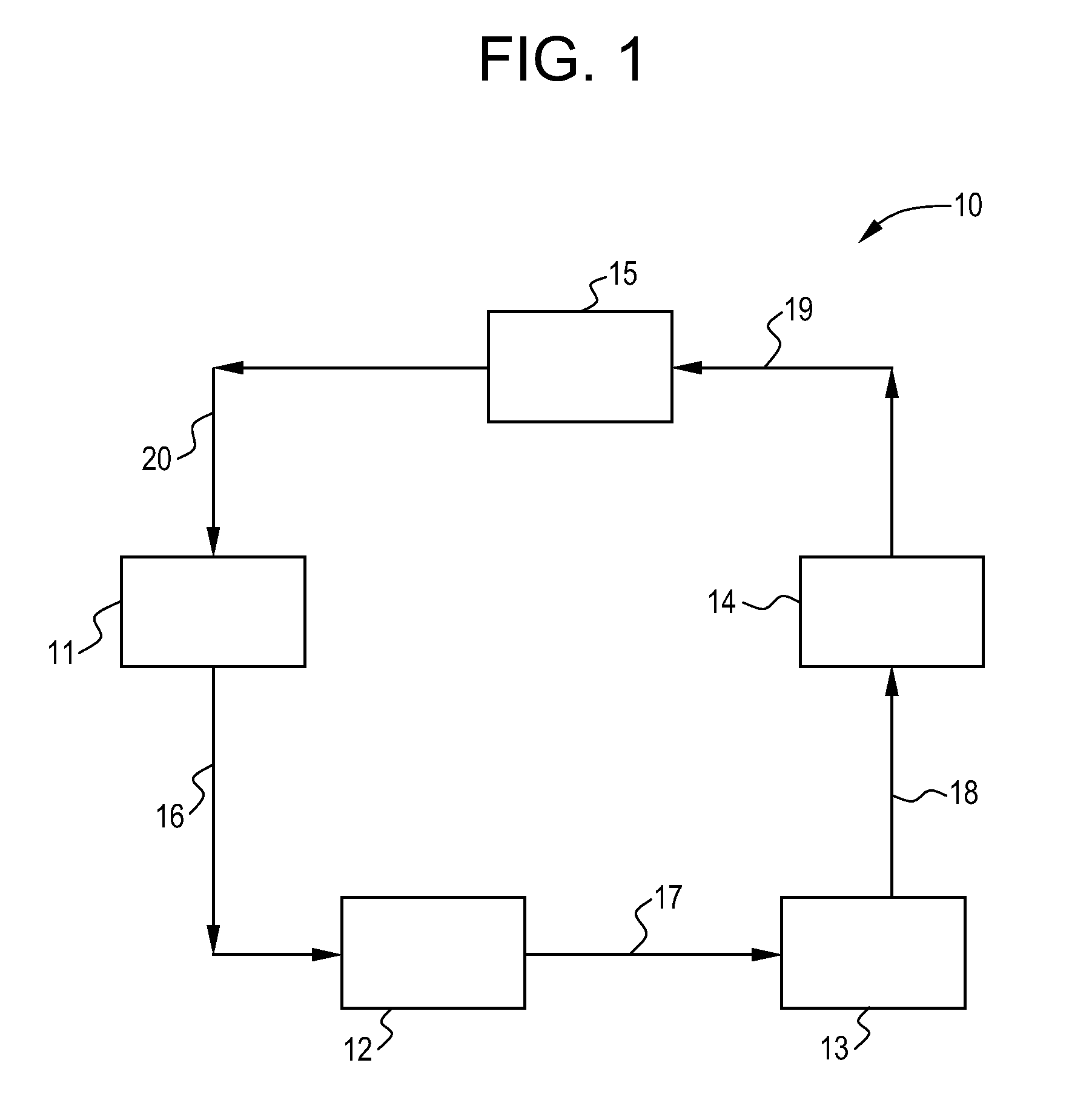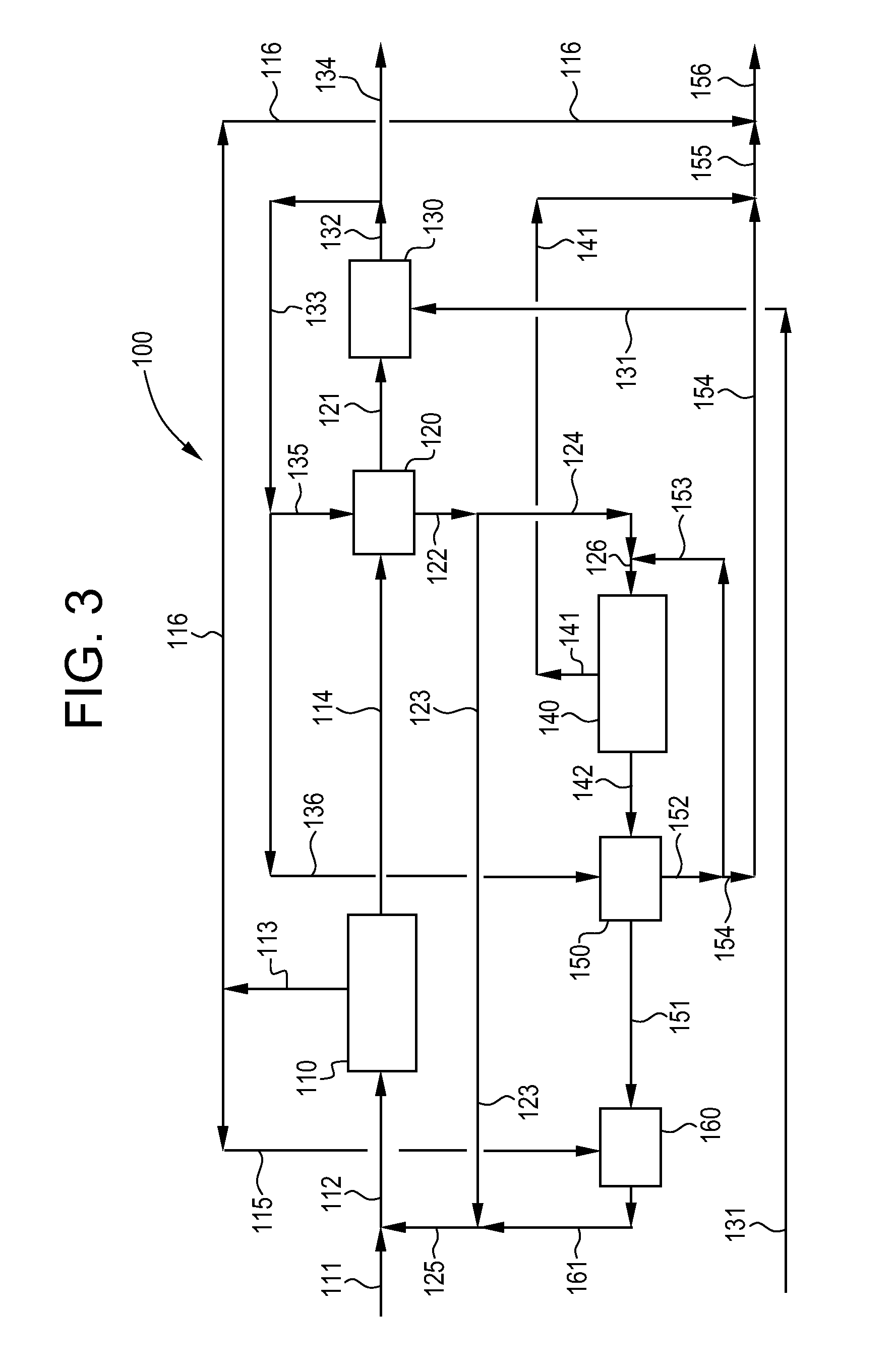Brine purification
a technology of brine and sodium chloride, which is applied in the direction of crystal growth process, alkali metal halide purification, separation with moving sorbents, etc., can solve the problems of undetectable corrosive or toxic chlorinated organic compounds, difficult to remove, and the level of sodium chloride (nacl) is too high for direct discharge, so as to reduce the content of high total organic carbon (toc)
- Summary
- Abstract
- Description
- Claims
- Application Information
AI Technical Summary
Benefits of technology
Problems solved by technology
Method used
Image
Examples
example 1
[0464]The equipment used in this Example 1 consisted of a jacketed glass reactor of 0.32 liter effective volume, equipped with a holder to which an anode and cathode were attached; a magnetic agitator; a short pipe inlet piece connected to a peristaltic pump for feed supply from a storage vessel; a short pipe outlet piece for overflow of the reactor effluent into a collecting vessel; and a thermostat connected to the inlet and outlet pipe pieces of the reactor jacket. The electrodes were connected to the appropriate poles of a rectifier operated with 220 V power supply. The reactor jacket was further connected to a cryostat which was adjusted to maintain the temperature of the reactor contents at constant 40° C.
[0465]The reactor was filled with raw brine with a sodium chloride content of 18% and an organic content corresponding to 1700 mg / l dissolved organic carbon (DOC), adjusted to a pH of 10. The feed storage vessel contained the same material. After starting the agitator and the...
example 2
[0466]0.32 l of brine containing 19.8% sodium chloride and 1900 mg / l DOC content was placed in the reactor and about 1000 ml of the same material in the feed storage vessel. The reaction was carried out under otherwise same conditions as described in Example 1 above but at a current adjusted to constant 10 A. The energy uptake was 0.145 kWh, the feed rate was 1.3 ml / min corresponding to a mean hydraulic residence time of 4 hours in the reactor. The effluent was collected as before and analyzed. The DOC content was 35 mg / l, the chlorate content was 5850 mg / l and the sodium hypochlorite content was 7550 mg / l. 100 ml of this material were placed in a round-bottom flask as in the previous experiment and acidified to pH 1.5 by addition of 32% hydrochloric acid. The contents were heated to 100° C. and agitated at this temperature for 60 minutes. A sample was then withdrawn and analyzed for sodium hypochlorite by iodine titration with potentiometric endpoint recognition. The sodium hypochl...
example 3
[0467]In this Example 3, microbes are selected and adapted according to the present invention.
[0468]3.5 g / liter of a diverse microbial population comprising the species Vibrio alginolyticus, Halomonas salina, and / or Halomonas campaniensis is introduced into a bioreactor vessel containing an aqueous brine solution containing 3.5 wt % sodium chloride and 500 mg / liter glycerol. The aqueous brine solution is fed at a rate in the range from 0.1 to 1.5 kg glycerol per kg microbes per day so as to maintain a 50 mg / liter glycerol concentration at the bioreactor outlet. A comparable outflow of the mixture in the bioreactor is provided to maintain a constant unit volume within the bioreactor. Sufficient nutrients are added to the aqueous brine stream to maintain the NH4—N concentration at the bioreactor outlet at 10 mg / liter and the orthophosphate concentration at the bioreactor outlet at 5 mg / liter. The sodium chloride concentration is raised at a rate of about 0.5 wt % per 4 hydraulic resid...
PUM
| Property | Measurement | Unit |
|---|---|---|
| Temperature | aaaaa | aaaaa |
| Fraction | aaaaa | aaaaa |
| Fraction | aaaaa | aaaaa |
Abstract
Description
Claims
Application Information
 Login to View More
Login to View More - R&D
- Intellectual Property
- Life Sciences
- Materials
- Tech Scout
- Unparalleled Data Quality
- Higher Quality Content
- 60% Fewer Hallucinations
Browse by: Latest US Patents, China's latest patents, Technical Efficacy Thesaurus, Application Domain, Technology Topic, Popular Technical Reports.
© 2025 PatSnap. All rights reserved.Legal|Privacy policy|Modern Slavery Act Transparency Statement|Sitemap|About US| Contact US: help@patsnap.com



